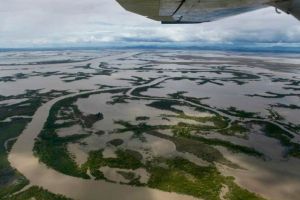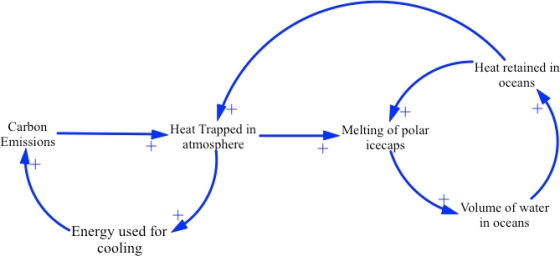It’s too good an opportunity to pass up.
Recent weather conditions in Texas provide an opportunity to reflect on some of the fundamental aspects of climate change.
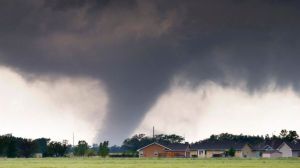
Tornadoes in Texas (actually it was Kansas but I thought Dorothy and Toto would just confuse everybody)
Meteorologist Edward Lorenz published a paper Deterministic Nonperiodic Flow which developed the work of Henri Poincaré and laid the foundation for chaos theory.
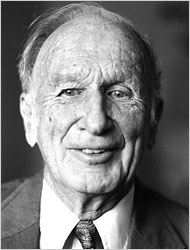
Edward Lorenz
He later presented a paper based on his original work entitled Does the flap of a butterfly’s wings in Brazil set off a tornado in Texas?
The fundamental idea behind this wonderfully poetic image is that small changes in weather systems can often trigger dramatic and catastrophic events many miles away.
There a number of important concepts underlying Lorenz’s idea.
The first is sensitivity to initial conditions. Imagine the static charges in a thunder cloud just before you see the lightning. It takes just a very small change in the balance between the positive and negative charges in the cloud to create lightning.
It is helpful to think of sensitivity to initial conditions as a situation where conditions reach a tipping point and things change rapidly. While this term refers to the starting state of the system, it is easier to think of this as the state of a system at any point of time.
This brings us to the second important concept: closely coupled systems. These are systems where each individual element of the system is connected to many other elements and where the interactions between the elements are so numerous, they are difficult to predict.
Hence the butterflies wings in Brazil are part of the conditions that may produce tornadoes in any the part of world.
Earthquakes are another example of sensitivity to initial conditions and closely coupled systems. The tectonic plates that lie beneath the Earth’s surface represent closely linked systems.
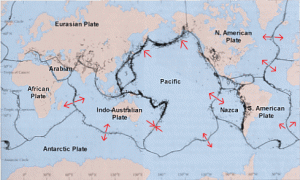
The world’s tectonic plates
Movements in one part of the structure will reverberate through the system. Every now and then a reverberation occurs at a point that is sensitive to initial conditions and then there is an earthquake. We know that certain areas are earthquake prone but beyond that prediction is exceptionally difficult.
Weather systems share these characteristics. Many of the more spectacular events are triggered by sensitivity to initial conditions: sudden downpours produce widespread flooding such as was seen in Queensland and Victoria.
While weather systems have always been sensitive to initial conditions, there is now an added component to the dynamics of weather systems: the burning of fossil fuels. The heat that is trapped as a result of this has resulted in a large number of systems which exhibit sensitivity to initial conditions being pushed to breaking point.
The polar ice caps are an excellent example of this.
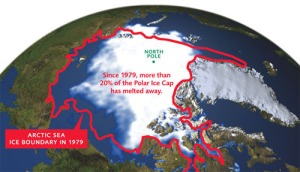
The melting of the Arctic ice has pushed many with systems to a critical point
The critical and disastrous effect of this is that the melting of the ice caps creates a reinforcing feedback system.
The loop on the right-hand side of the diagram is the reinforcing system. The more the ice caps melt, the greater the volume of the water in the oceans, the more heat is retained in the oceans, the more the polar ice caps melt.
The critical thing to understand about these positive feedback loops is that their effects do not increase in a linear fashion but exponentially. This means that things start getting bad but then after a while they get really bad really quickly.
And here’s why this happens.
The heat that is trapped in the oceans increases the heat trapped in the atmosphere. This in turn serves to accelerate the melting of the polar ice caps. So there are two impacts on the ice caps: the first is the temperature of the oceans and the second is the temperature of the atmosphere.
But there’s another effect in this closely coupled system.
As the temperature of the atmosphere increases, people use more energy to cool their houses. This in turn increases carbon emissions which increases the trapped heat in the atmosphere. So we now have three reinforcing feedback loops working in this closely coupled system and all of them are serving to accelerate the rate at which our climate is being degraded.
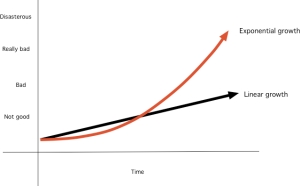
How things get worse very much more quickly.
Our planet is reaching the really-bad-really-quickly state and eventually We will reach a point where nothing we can do will be of any use.
